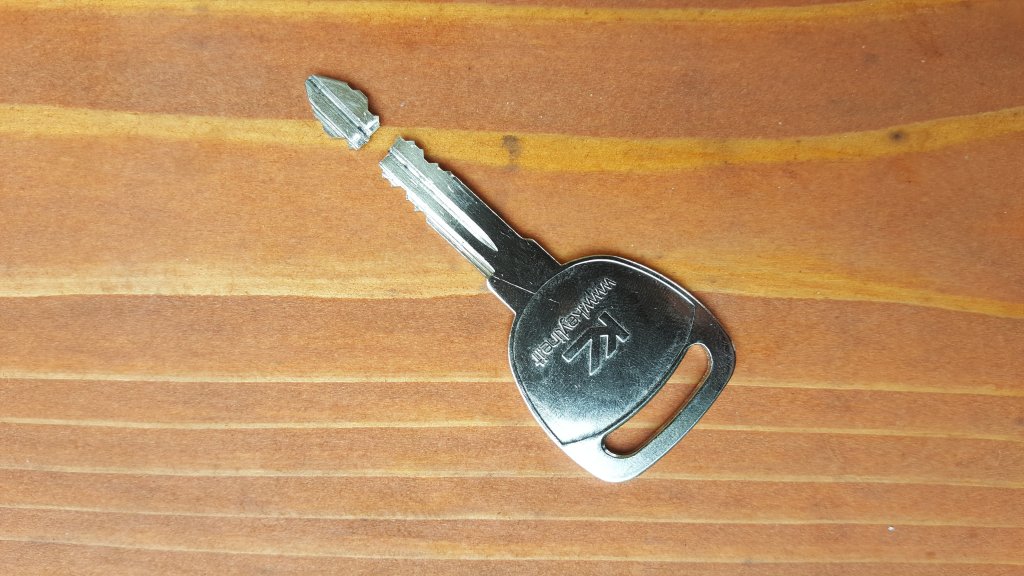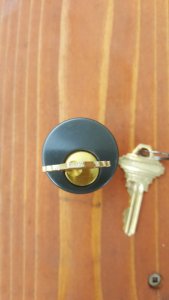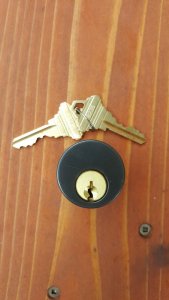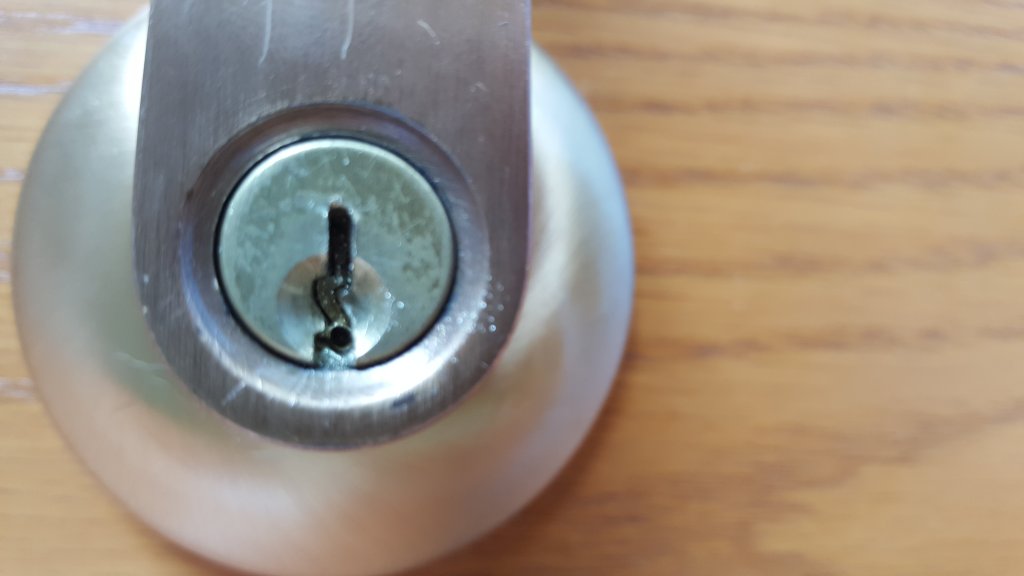Broken & Worn Keys
Don’t worry, a broken key is better than no key.
Locksmiths can help you sort out many different related issues. We use keys everyday at home, at work, and for our vehicles. We seldom expect them to break or notice their slow wear, but they do break and wear. What can happen, and what can you do about it?
We will start with the most popular problems and move through to the most unfortunate circumstances

- Bad Copies – This is the number one problem people have with keys. Hands down. If you’re having problems with a lock check that your key is a good copy.
- Try both sides if the key double sided
- Try other copies of key
- Lubricate the Lock, a thin Teflon base lube is best. Note freezing temperature of lube if applicable.
- Don’t try to force the key – It will make things worse.
- Extra force can damage internal lock parts, it can destroy lock function & add costs. Stay gentle.
- Light jiggling + Gentle turning tension, lube increases your odds – Try both sides
- Be persistent & gentle, cycle though different techniques and stay lubed.
- The “spacing” may be off. Slide the key out in tiny increments, try turning lock each time – Try both sides
- Have a locksmith Decode your bad copy and Re-cut your key by the specific lock manufacturer standards.
- Bent & Twisted Keys
- Bent it back to normal
- This makes keys weak, use with caution.
- Apply lube to the Lock
- Light jiggling + Gentle turning tension, lube increases your odds – Try both sides if double sided key
- Bending internal lock parts can destroy lock function & add costs. Stay gentle.
- Bring your key to a locksmith and have a new key cut. A locksmith can normally decode and Re-cut any keys too poor to copy.
- Bent it back to normal
- Worn Keys
- Lubricate your lock
- These keys may bend easily
- Light jiggling + Gentle turning tension, lube increases your odds – Try both sides if double sided key
- Worn keys can normally be decoded and re-cut by a Locksmith
- Replacement transponder keys will require programming. Consult a Locksmith.

When a lock cylinder is turned away from its normal resting position keys cannot be inserted or removed.
- Replacement transponder keys will require programming. Consult a Locksmith.
- Not bending your key is your main focus.
- Be persistent, lubricate regularly, remain gentle
- Broken Keys – Outside and Inside of Locks
- Do NOT put pieces into a lock unless you absolutely need to (stuck in the desert). If you try this it likely fail, but you have one shot.
- Unless you have no other option don’t do this.. EMERGENCY USE ONLY
- This isn’t likely to work, and will cost over $100 to have removed
- Lubricate lock if possible
- Correctly face both pieces in their original directions, look at the breaking point of each piece and fit them back together.
- Plan to insert pieces with them both facing original directions so they may fit together better
- Insert tip piece partially

The key-way must be in the correct position for a key, or piece of a key to be removed. - Use the 2nd piece to push the 1st
- Any gap between pieces may cause failure
- Pushing a broken piece in too deep may cause failure.
- Fully seat key and turn
- Hire a locksmith, discuss your particular situation with them.
- Some jobs will need to be done on loction.
- Some keys can be cut in shop very easily
- Transponder keys require programming
- Key extraction can be difficult, and requires some specific knowledge.
- The correct tools are extremely advantageous, but even proper tools this can be difficult.
- Vice-grips
- “Key Extractors” various sizes
- Lock picks (hook and half diamond)
- Lube
- Flashlight
- Needle nose pliers
- Pins and wafers inside of the lock are under spring pressure so the rest on your key.
- These parts can trap broken key pieces inside of key-ways, simply push them aside while extracting the key.
- The lock must be turned to a position where the key can be removed.
- You’re re-locking the lock when you do this. Turning the lock back will likely disallow any further lock rotation until the key is extracted. This must be done eventually to remove the key, but the advantages of a turned ignition cylinder may cause you to pause for thought, should you drive it elsewhere before you turn the cylinder back? You will need to extract the key and acquire a spare key to operate the lock again after you turn it back.
- Ignition keys are inserted and removed in the “Off” position only. Turning the ignition to “Off” will re-lock it. It needs to turn if you want to remove the ignition switch or start the car. Mind the transponder’s proximity when starting newer cars with damaged keys. Keep the head of the key near its usual position. Nissan transponders are directional, they must point toward the ignition switch from the regular angle.
- Is your car parked somewhere it can stay until you resolve your lock problem?
- Consider calling a locksmith before advancing
- You’re re-locking the lock when you do this. Turning the lock back will likely disallow any further lock rotation until the key is extracted. This must be done eventually to remove the key, but the advantages of a turned ignition cylinder may cause you to pause for thought, should you drive it elsewhere before you turn the cylinder back? You will need to extract the key and acquire a spare key to operate the lock again after you turn it back.
- Deadbolt, levers, and knobs present their own complications.
- Levers and knobs should be left turned when possible.
- Disassemble lock, until you can push key through back of key way or remove cylinder plug.
- Levers and knobs should be left turned when possible.
- Fishing for the broken piece may cause damage, use caution.
- The correct tools are extremely advantageous, but even proper tools this can be difficult.
- Do NOT put pieces into a lock unless you absolutely need to (stuck in the desert). If you try this it likely fail, but you have one shot.

*I refer to “double sided keys” as a possibility, not every key has two sides
*lubricant recommended is Teflon based lube – check freezing point of any lube when applicable- apply generously
Further acknowledgements
Your key might be functional, your lock could be broken. Some locks may have extra complications, you may have a recently bent key as well as a locked steering column. Remain open-mined and consider other less obvious variables. Any key that isn’t a good key poses a threat to a lock. The parts inside of locks are often small thin brass wafers. These can be bent with a slight amount extra force. I have been frustrated by these types of issues before and tried to force locks, trust me it doesn’t work. Use a good lubricant, I recommend a thin Teflon bases lubricant applied generously. Be persistent and patient, as long as you don’t attempt to force the lock you can continue to try with confidence. Once you have crossed the line and tried to turn the lock too hard there is no way to tell if you have damaged the lock or if you just haven’t gotten lucky yet. Use a lot of lube if you need to.
Good luck to anyone struggling with a lock at the moment.

